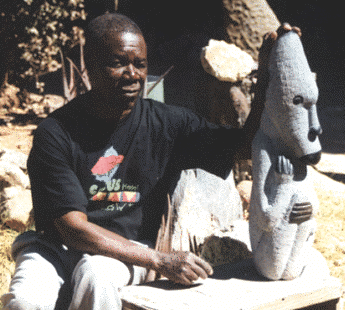
The master sculptor Joram Mariga (1927 - 2000) is strongly associated with the beginning of the Shona (Zimbabwean) stone sculpture movement. The precise sequence of events leading to its birth can be challenging to determine at this point. However, Mariga is widely considered to be its “father”, or the first sculptor who committed himself to developing the contemporary sculpture movement in Zimbabwe.
Born into an artistic family, young Mariga watched his father and brother carve wood, and his mother make ceramics. He started by carving wood, then (soft) soapstone artifacts, and later discovered much harder and more colourful serpentine stones that he committed himself to working with.
At the end of the 1950s, Mariga met Pat Pearce, who, in 1962, introduced him to Frank McEwen, who was then the director of the Rhodesian Art Gallery in Salisbury, Rhodesia (now Harare, Zimbabwe). Surprised by the fact that his sculptures could serve as a source of income, Mariga took the initiative to interest more people in the carving, starting in his home town of Nyanga.
He taught and influenced many who later also became prominent “first generation” artists. At his Nyanga ‘studio’ and during his travels, Mariga said that he said, he consistently ‘whispered the gospel of sculpture”.
It was important to Mariga to retain Shona customs and the significance of the natural world. His great mastery of the art and knowledge of the early days ensures that he remains admired, respected and a powerful example to contemporary artists.
Fill out the form:
